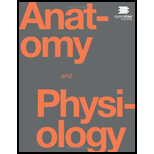
Watch this video (http://openstaxcollege.org/l/fightflight) to learn more about adrenaline and the fightor-flight response. When someone is said to have a rush of adrenaline, the image of bungee jumpers or skydivers usually comes to mind. But adrenaline, also known as epinephrine, is an important chemical in coordinating the body’s fight-or-flight response. In this video, you look inside the physiology of the fight-or-flight response, as envisioned for a firefighter. His body’s reaction is the result of the sympathetic division of the autonomic nervous system causing system-wide changes as it prepares for extreme responses. What two changes does adrenaline bring about to help the skeletal muscle response?
To write:
The changes that adrenaline would bring to help the skeletal muscle respond in a fight-or-flight response mediated by sympathetic division of the autonomic nervous system.
Introduction:
Adrenaline or the epinephrine is a hormone and a neurotransmitter produced by the adrenal glands and the neurons respectively. It plays an important role in the fight-or-flight response. This is mediated by the sympathetic nervous system which stimulates the body's fight-or-flight response.
Explanation of Solution
The changes that adrenaline would bring to help the skeletal muscle response in a fight-or-flight response by the sympathetic nervous system include the increase in heart rate and breathing rate which causes more blood flow to the skeletal muscles. The liver manufactures and stores glucose and releases it upon the body's requirement. The other change is the stimulation of the liver to release more glucose for enhancing the energy levels or fuelling the muscles.
Thus, increasing blood flow and releasing glucose by the liver are the two changes brought by the sympathetic nervous system during a fight-or-flight response.
Want to see more full solutions like this?
Chapter 15 Solutions
Anatomy & Physiology
Additional Science Textbook Solutions
College Physics
Biological Science (6th Edition)
Human Physiology: An Integrated Approach (7th Edition)
Human Anatomy & Physiology
Microbiology: An Introduction (13th Edition)
Campbell Essential Biology (6th Edition) - standalone book
- The hormone insulin enhances the carrier-mediated transport of glucose into most of the bodys cells but not into brain cells. The uptake of glucose from the blood by neurons does not depend on insulin. Knowing the brains need for a continuous supply of blood-borne glucose, predict the effect that insulin excess would have on the brain.arrow_forwardSketch a diagram or a flow chart to explain how does the autonomic nervous system exert its effects on its target tissue and organs. Give a specific example to illustrate your response.arrow_forwardPredict the effect of an overdose of insulin on brain function in a normal person.arrow_forward
- Watch this video (http://openstaxcollege.org/l/ emotions) to learn about physical responses to emotion. The autonomic system, which is important for regulating the homeostasis of the organ systems, is also responsible for our physiological responses to emotions such as fear. The video summarizes the extent of the body’s reactions and describes several effects of the autonomic system in response to fear. On the basis of what you have already studied about autonomic function, which effect would you expect to be associated with parasympathetic, rather than sympathetic, activity?arrow_forwardUnlike real life, pandemics in the movies often involve people turning into zombies - in which case many of us would need to run for our lives. Running for your life from zombies requires you to sense and respond to danger. Describe how your sensory, nervous, and endocrine systems would function together to help you survive a zombie apocalypse, including the specific organs, cells, tissues, molecules and/or processes involved.arrow_forwardDuring the mid-1990s, the death of 2 top basketball players was linked to the use of cocaine. Referring to homeostatic mechanisms, explain why using a stimulant before exercise is dangerous.arrow_forward
- ATPase is an enzyme that can hydrolyse ATP and release the potential energy stored in the phosphate bond. How would a metabolic inhibitor that blocks ATPase function affect the resting potential of nerve cells?arrow_forwardIf Devan’s brain is producing serotonin and GABA, he would need to get plenty of which vitamins in order to make them? Group of answer choices Thiamin and pantothenic acid Pyridoxine and pantothenic acid Niacin and thiamin Pyridoxine and thiaminearrow_forwardThe information travels from one nerve cell to the next in the form of neurotransmitters antigens electricity potassium hormonesarrow_forward
- The effector is the organ that response to the release of hormones in the body. Based on diagram what organ would be the effector?arrow_forwardThe sympathetic nervous system has a key function in the stress response. What is that?arrow_forwardChoose a medication that acts as either an agonist or antagonist. Name of medication, the receptor that binds to and what kind of reaction it causes. Give an example of a patient that would be taking this medication?arrow_forward
 Anatomy & PhysiologyBiologyISBN:9781938168130Author:Kelly A. Young, James A. Wise, Peter DeSaix, Dean H. Kruse, Brandon Poe, Eddie Johnson, Jody E. Johnson, Oksana Korol, J. Gordon Betts, Mark WomblePublisher:OpenStax College
Anatomy & PhysiologyBiologyISBN:9781938168130Author:Kelly A. Young, James A. Wise, Peter DeSaix, Dean H. Kruse, Brandon Poe, Eddie Johnson, Jody E. Johnson, Oksana Korol, J. Gordon Betts, Mark WomblePublisher:OpenStax College Comprehensive Medical Assisting: Administrative a...NursingISBN:9781305964792Author:Wilburta Q. Lindh, Carol D. Tamparo, Barbara M. Dahl, Julie Morris, Cindy CorreaPublisher:Cengage Learning
Comprehensive Medical Assisting: Administrative a...NursingISBN:9781305964792Author:Wilburta Q. Lindh, Carol D. Tamparo, Barbara M. Dahl, Julie Morris, Cindy CorreaPublisher:Cengage Learning Human Physiology: From Cells to Systems (MindTap ...BiologyISBN:9781285866932Author:Lauralee SherwoodPublisher:Cengage Learning
Human Physiology: From Cells to Systems (MindTap ...BiologyISBN:9781285866932Author:Lauralee SherwoodPublisher:Cengage Learning



